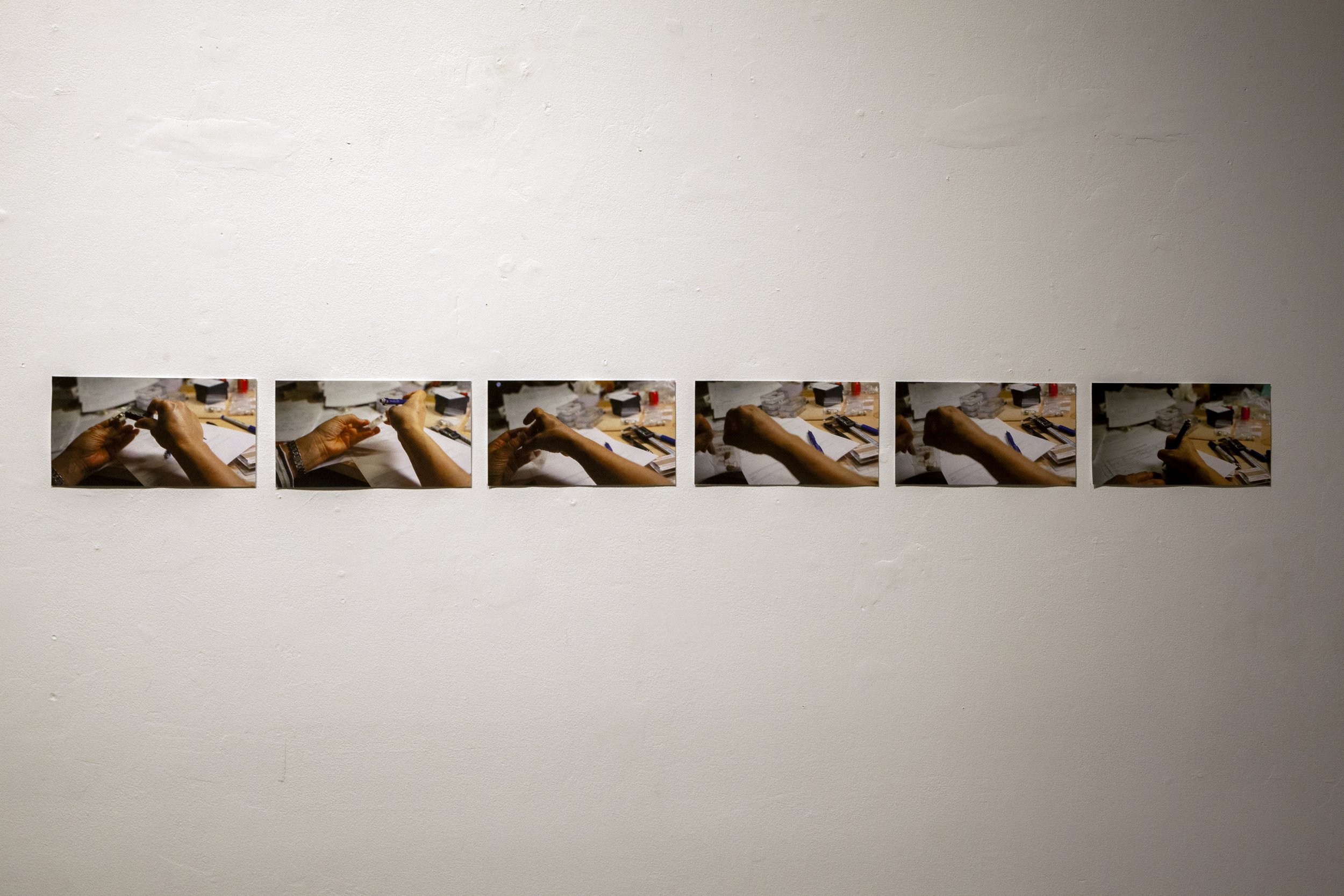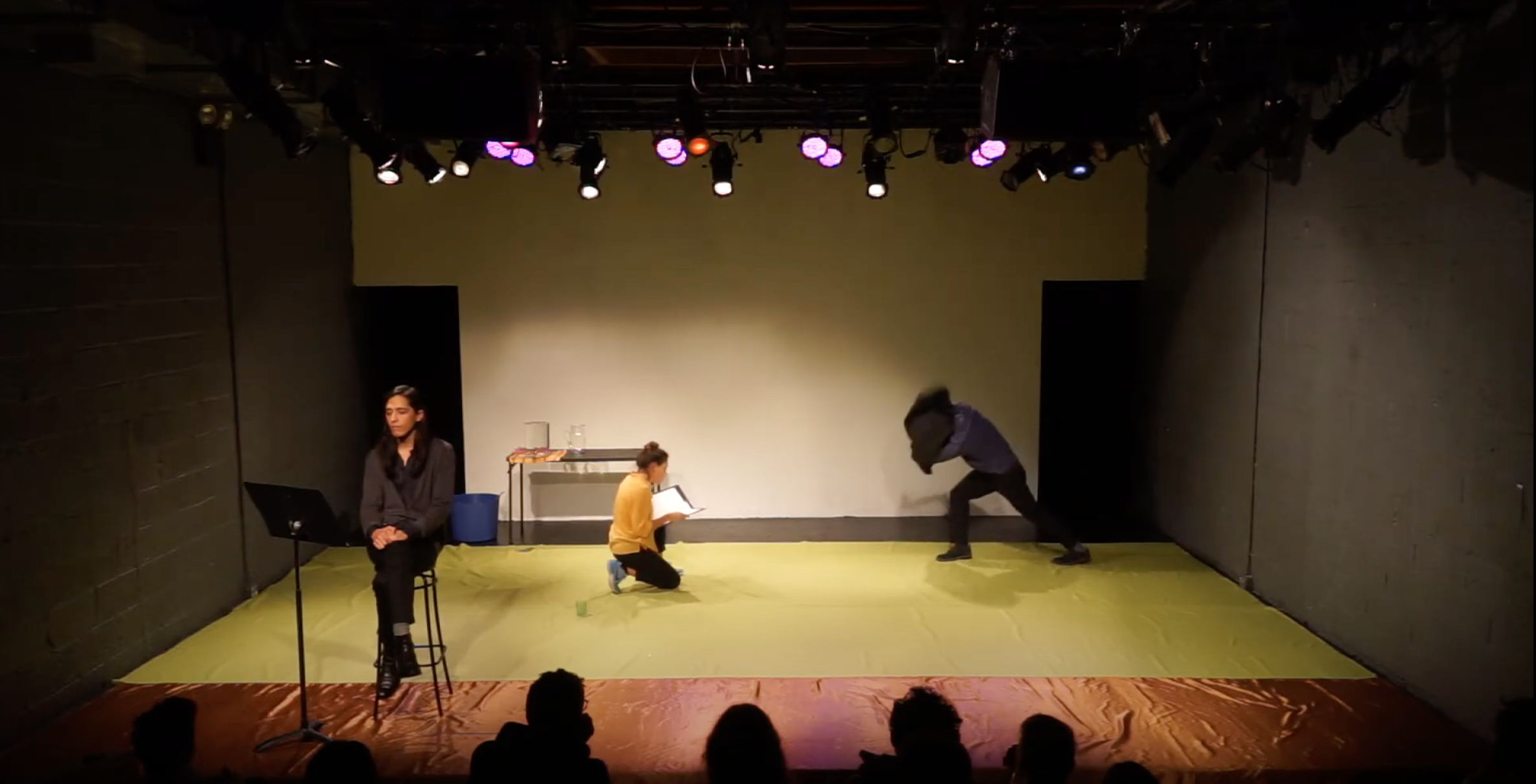With the Future on Our Backs
December 10th, 2019 – January 31st, 2020
Opening and Performance December 10th – 5:30pm – 7:30pm.
A-Museum of Quickroots emerged in response to a question: why don’t museums represent the experience of undocumented migration? A-Museum’s itinerant exhibition program presents images, objects, texts, and performances as documentation of migrant experience. Wild Project will house its fourth iteration, realized through collaborations by Christhian Diaz, Pablo Mariano Diaz, Sofia Dixon, Mauricio Higuera (Et al.) and Mikhaila Quezada.
Con el Futuro en Nuestra Espalda
10 de diciembre de 2019 – 31 de enero de 2020
Inauguración y performance: 10 de diciembre – 5:30 pm – 7:30 pm
Un-Museo de Raices Movedizas surgió en respuesta a una pregunta: ¿por qué los museos no representan la experiencia de la migración indocumentada? El programa expositivo itinerante de A-Museum presenta imágenes, objetos, textos y performances como documentación de la experiencia migrante. Wild Project albergará su cuarta iteración, realizada a través de colaboraciones de Christhian Díaz, Pablo Mariano Díaz, Sofía Dixon, Mauricio Higuera (Et al.) y Mikhaila Quezada.
The Wild Project, LES, 2019
Mauricio Higuera, With the Future on Our Backs, inkjet on paper, 2019
Center: Pablo Diaz, Paratropics ( 1 of 2), Aqua-Resin on Burlap, 2019
Right: Sofia Dixon, inkjet on paper, 2019
Pablo Diaz, Paratropics (2 of 2), Aqua-Resin on Burlap, 2019
Left: Pablo Diaz, Paratropics ( 2 of 2), Aqua-Resin on Burlap, 2019 Right: Sofia Dixon, inkjet on paper, 2019.
Mikhaila Quezada, Leaves, watercolor on napkin bundles, 2019
Christhian Diaz, Instrucciones para lamentar / Instructions for Lamentation, 2020. Performance, 25 min
With the Future on our Backs: Notes on the language of undocumentation
Con el Futuro a Nuestra Espalda: Notas sobre el lenguaje de la indocumentación
This iteration investigates second takes, doubles, repetitions, and revisions. The work installed in the entrance gallery of Wild Projects presented a photograph of the back of a guard posted at the entrance of a museum. The photo is flanked by two walls with mirroring installations of Pablo Diaz and Sofia Dixon’s work, double takes of their work. Mikhaela Quezada’s sculpture doubles a take on leaf with a representation of a plant on a bundle of napkins; paper leaves themselves. As with any creative process, revisions help elaborate a project. Christhian Diaz’s work, which he performed past the gallery entrance in the Wild Project theater, builds on a repetition of gestures to build Instructions for Lamentation, a 25 minute performance.
Grammatical revisions were suggested by the curatorial team at Wild Project in an effort to publish an announcement for the exhibition opening. In response we wrote an addendum to the original statement which, due to word count limitations, was not published. Prompted by the need for clarity, we have included our addendum below.
Any statement published as part of an A-Museum iteration is considered a text, a document, an iteration of its problematic to the extent that it represents it and becomes increasingly literal. The equivocations are intentional. For example, a crisis of meaning is actualized when grammar is prioritized over the meaning sought in syntactical play. Grammar iterates the border condition in the sense that it implies that there might not be any meaning or considerable reason for breaking the rules. What we write might not be poetry but it crosses the same grammatical lines seeking meaning. To take that away is a gesture which, however minimally, takes away its potential meaning from becoming a document. This is what we mean by the verb to undocument.
When we read the Wild Projects curatorial revision,
“Through cultural production, A-Museum addresses the crisis of meaning produced by undocumentation.”
the subject becomes unequivocally A-Museum, as in, the museum. It may be grammatically correct but not exclusively what we mean.
The rest follows in the same logic.
It is not the museum, it is A-Museum. A-Museum which when read and turned into sound is equivocal to a museum, and carries meaning in its alliteration: a museum, any museum, could address the crisis of meaning produced by undocumentation through cultural production. Because, it is through cultural production that we reproduce undocumentation.
Esta iteración investiga segundas tomas, dobles, repeticiones y revisiones. La obra instalada en la galería de entrada de Wild Project presentaba una fotografía de la espalda de un guardia apostado en la entrada de un museo. La foto estaba flanqueada por dos muros con instalaciones en espejo del trabajo de Pablo Díaz y Sofía Dixon, dobles tomas de su obra. La escultura de Mikhaela Quezada duplica una toma sobre la hoja con la representación de una planta sobre un manojo de servilletas; hojas de papel en sí mismas. Como en cualquier proceso creativo, las revisiones ayudan a elaborar un proyecto. La obra de Christhian Díaz, que presentó más allá de la entrada de la galería en el teatro de Wild Project, se construye sobre la repetición de gestos para conformar Instrucciones para la lamentación, una performance de 25 minutos.
El equipo curatorial de Wild Project sugirió revisiones gramaticales con el fin de publicar un anuncio de la inauguración de la exposición. En respuesta, escribimos un adéndum al texto original que, debido a limitaciones de espacio, no fue publicado. Motivados por la necesidad de claridad, incluimos nuestro adéndum a continuación.
Cualquier texto publicado como parte de una iteración de A-Museum se considera un texto, un documento, una iteración de su problemática en la medida en que la representa y se vuelve cada vez más literal. Las equivocaciones son intencionales. Por ejemplo, una crisis de sentido se actualiza cuando la gramática se prioriza por encima del significado buscado en el juego sintáctico. La gramática reitera la condición de frontera en el sentido de que implica que puede no haber ningún significado ni razón considerable para romper las reglas. Lo que escribimos quizá no sea poesía, pero cruza las mismas líneas gramaticales en busca de sentido. Quitar eso es un gesto que, aunque mínimamente, le resta a su potencial de volverse documento. A esto es a lo que nos referimos con el verbo indocumentar.
Cuando leemos la revisión curatorial de Wild Project:
“A través de la producción cultural, Un-Museo aborda la crisis de sentido producida por la indocumentación.”
el sujeto se vuelve inequívocamente Un-Museo, como institución museal. Puede ser gramaticalmente correcto, pero no es exclusivamente lo que queremos decir.
El resto sigue la misma lógica.
No es el museo, es Un-Museo. Un-Museo que, al leerse y pronunciarse, es equívoco a un museo, y porta un sentido en su aliteración: un museo, cualquier museo, podría abordar la crisis de sentido producida por la indocumentación a través de la producción cultural. Porque, es a través de la producción cultural que reproducimos la indocumentación.







